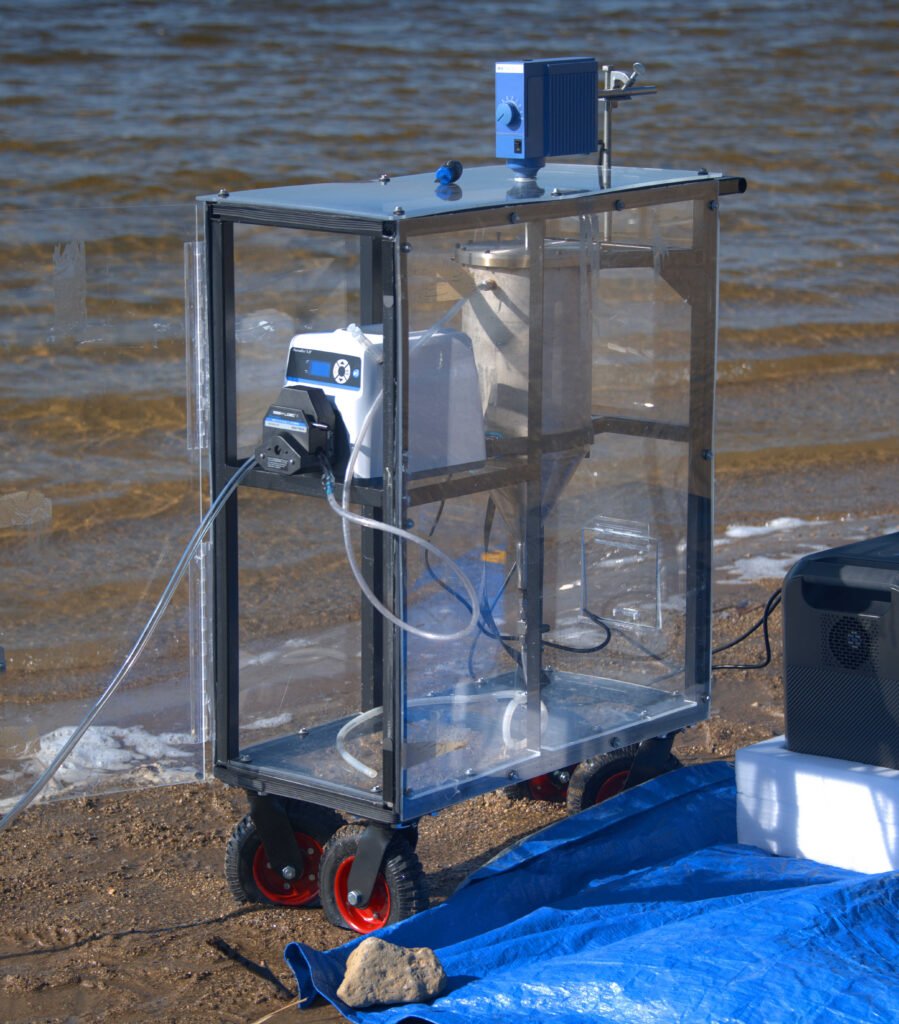Two summers ago, highschooler Noah Bryan was spending the day at a community lake with his friends.
Lake Wilcox is a recreational hotspot for friends and family that live in the city of Richmond Hill in Ontario, Canada. As he and his friends made their way to the beach, Noah caught notice of a sign beside the lake.
The sign warned visitors that the water may be unsafe for swimming. Noah was concerned and puzzled by the uncertainty of the warning.
Noah took it upon himself to test the quality of the water. He sought help from an expert at the University of Guelph, Dr. Lawrence Goodridge with the goal of definitively determining the water quality. Goodridge is the Leung Family professor in Food Safety and director of University of Guelph’s Canadian Research Institute for Food Safety, and he leads wastewater testing projects in communities across Ontario
Now in grade 11, Noah has spent the last 2 years working on testing water quality with the guidance from Dr. Goodridge.
“When I look back at all I’ve worked on in research over the past two years, I feel a really profound sense of appreciation for the opportunities I’ve been granted to work alongside and under the mentorship of such brilliant and talented people, and for the growth I’ve undergone as a scientist. It’s been a long-time dream of mine to use science to positively impact the lives of others, and I feel one step closer to realizing that aspiration with every passing day of work.”
Noah Bryan
Addressing a Crisis
Since his initial inspiration, Noah’s goal has shifted to align more closely with his interest in disease prevention and health outcomes that disproportionately impact people of marginalized communities, notably the black community which he identifies with.
Noah is now developing a test to determine the safety of water for drinking, as lack of access to clean drinking water is a matter of crisis in African countries such as Ethiopia, Chad and Uganda.
Noah’s project addresses the urgent need for faster, sensitive and accurate tests to determine the potability of drinking water. According to UNICEF, more than 25% of the global population lack access to clean, safe drinking water.
Over a million people worldwide die each year due to diseases from contaminated water. This number includes 255,000 children under the age of 5. Many more children regularly miss school because the water they drink makes them sick. Noah believes that the test they are developing can bring this number down significantly in due time.


Rapid Water Test
Noah has developed a portable laboratory that encompasses a 3 step water testing procedure:
- Water Sampling: The process begins with sampling 10 liters of water using a concentration device developed in the lab of Noah’s mentor, Dr. Lawrence Goodridge.
- Bacterial Concentration and DNA Isolation: The test uses paramagnetic beads with attached ligands that have specific bacterial affinity. These beads are added to the water, allowing bacteria to attach to the beads over a 30-minute mixing period. The beads, along with the bound bacteria, are then captured in a filter, and the DNA from the bacteria is purified.
- DNA Amplification and Sequencing: The specific gene targeted for amplification is the 16s rRNA gene, a common marker for identifying bacterial species. DNA libraries are prepared from the 16s rRNA amplicons and sequenced on an Oxford Nanopore MinION device. The data is analyzed using a bioinformatic program called Kraken, and visualized using a program called Krona.

The test takes 9 hours to complete from water sampling to data visualization. This means the test can be conducted on site, and provide real-time results directly about the water at the target area.
Results and Next Steps
Using his newly designed assay, Noah has demonstrated that he was able to detect multiple water and foodborne bacterial pathogens Including Salmonella, Clostridium, Vibrio and Staphylococcus aureus, in two different freshwater lakes. The detection limit of the test is approximately 160 cells/10,000 Liters.
Noah Bryan’s project directly addresses the real world problem of contaminated drinking water. Using his test, others will be able to determine the quality of their drinking water by testing directly for the presence of bacterial pathogens that are present in the water. This would represent a first step in developing solutions to inadequate drinking water quality.
“Noah is a brilliant researcher, and he is only in grade 11! Perhaps the best compliment that I can give Noah is the fact that he has inspired me to be a better scientist.”
Dr Lawrence Goodridge
For a comprehensive overview of the research and methodology, you can read Noah’s research poster here.
Looking for advice on using Bento Lab?
Book a free consultation or ask a question.